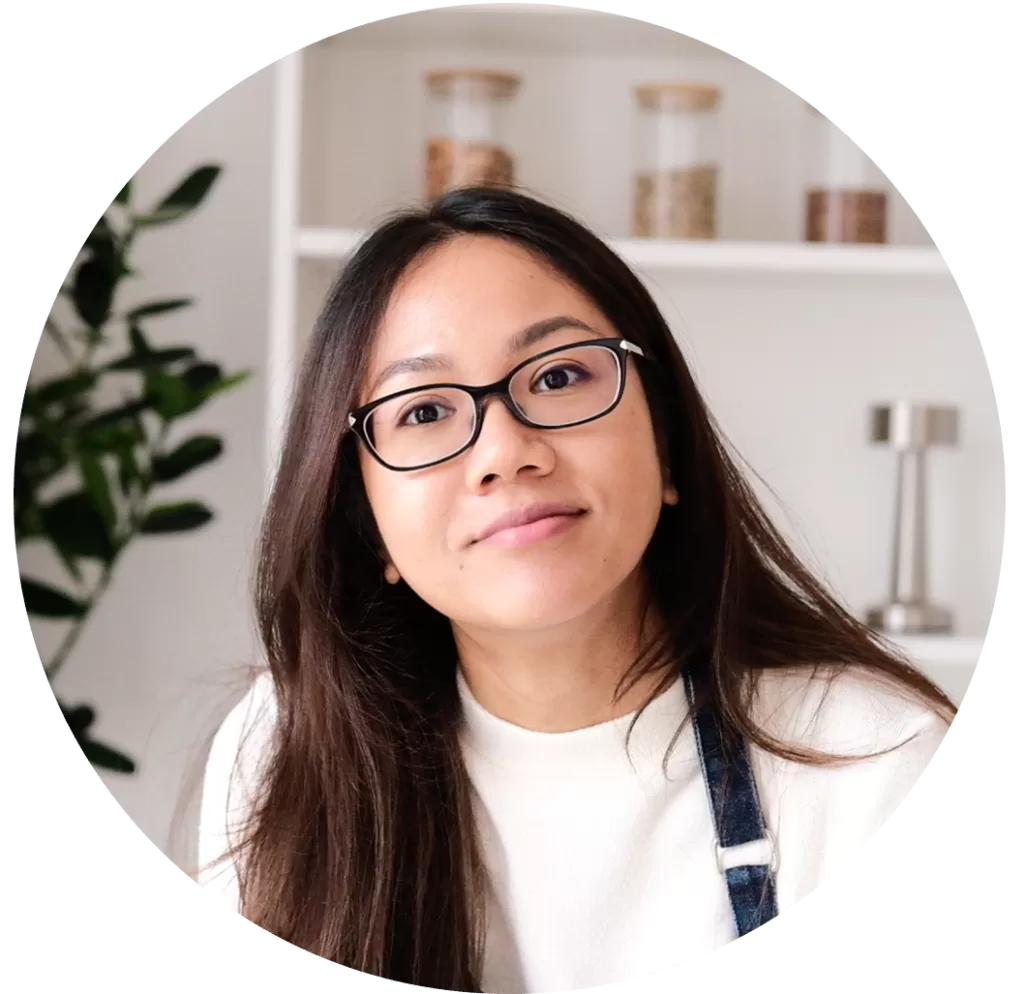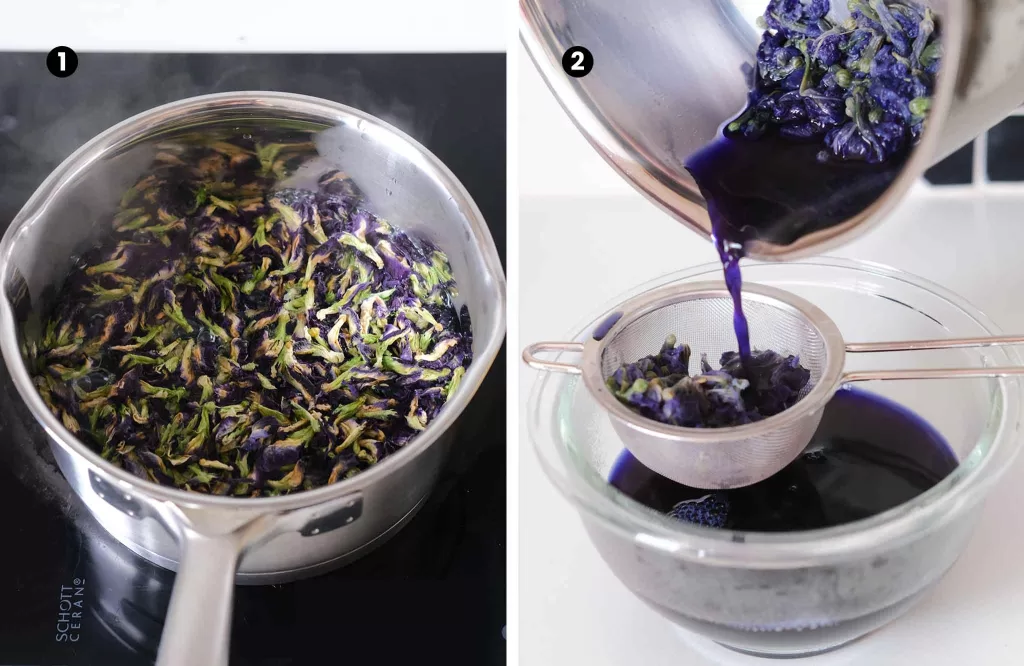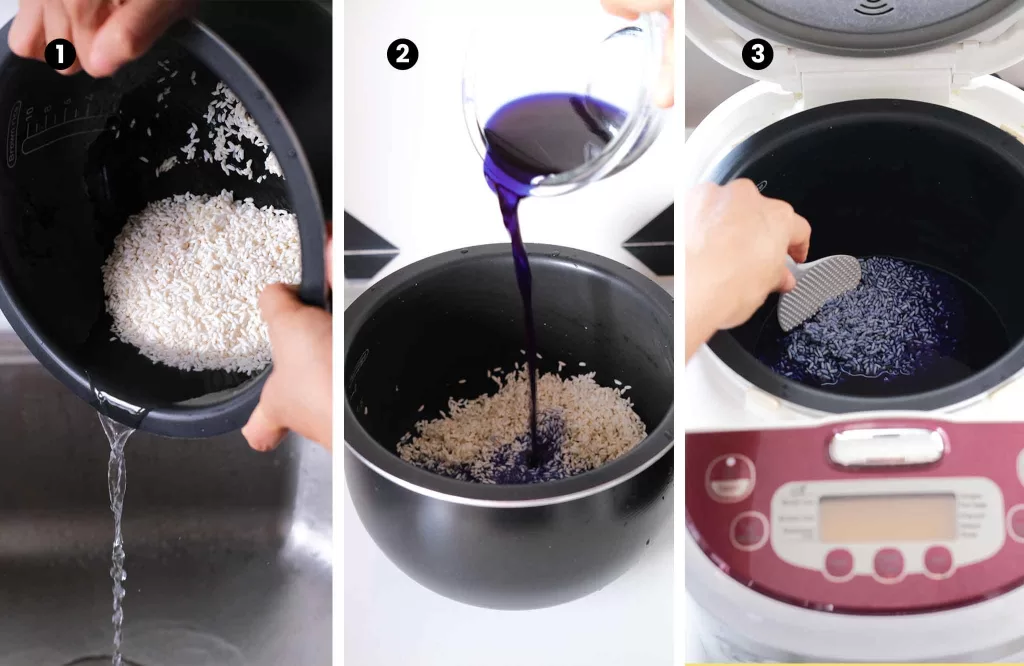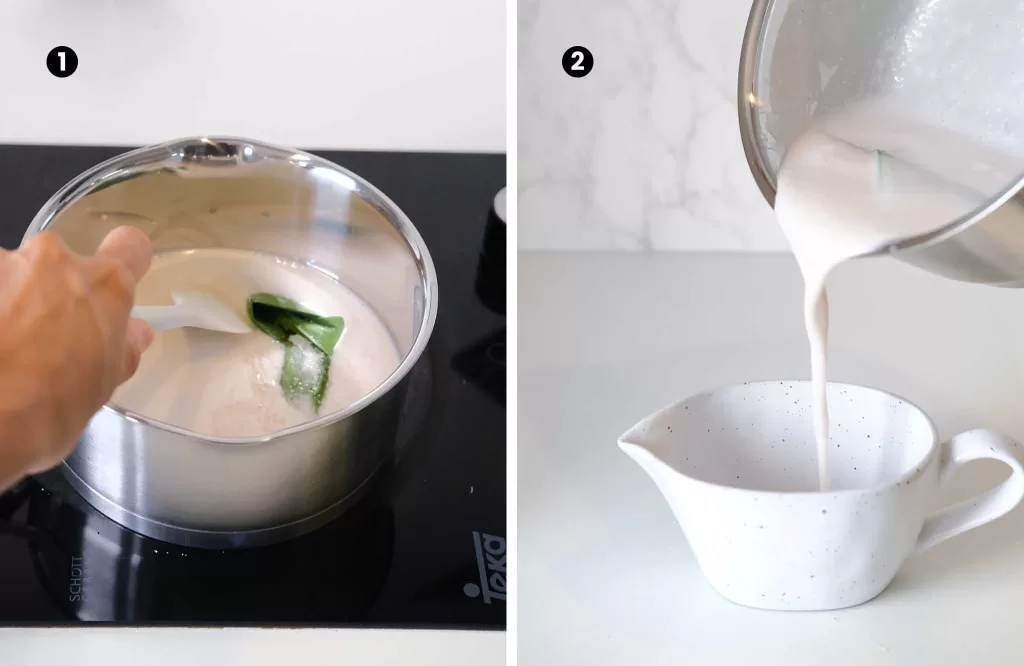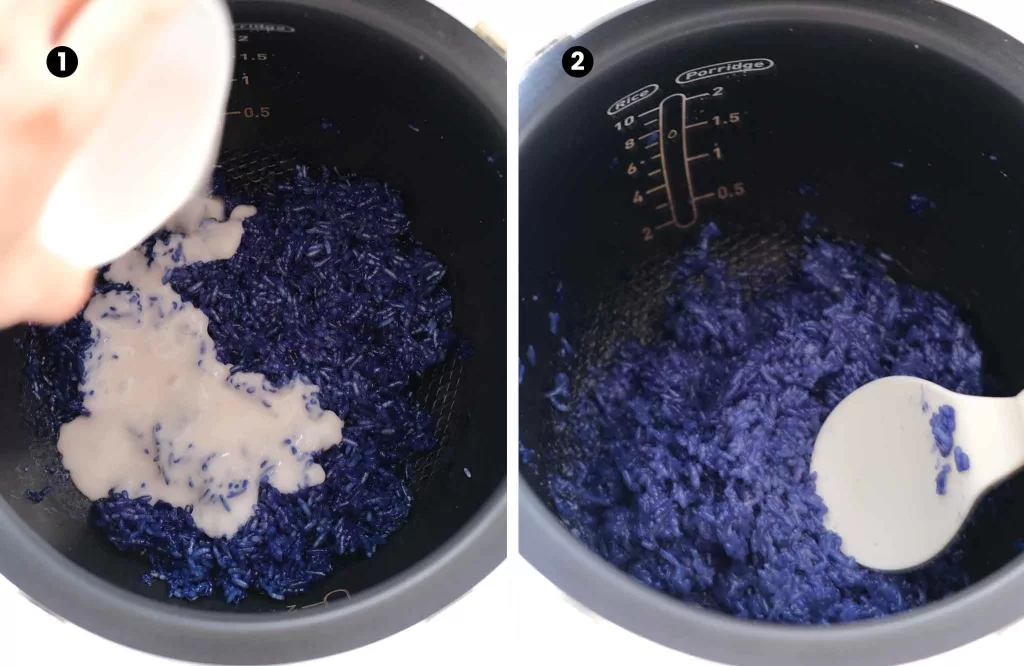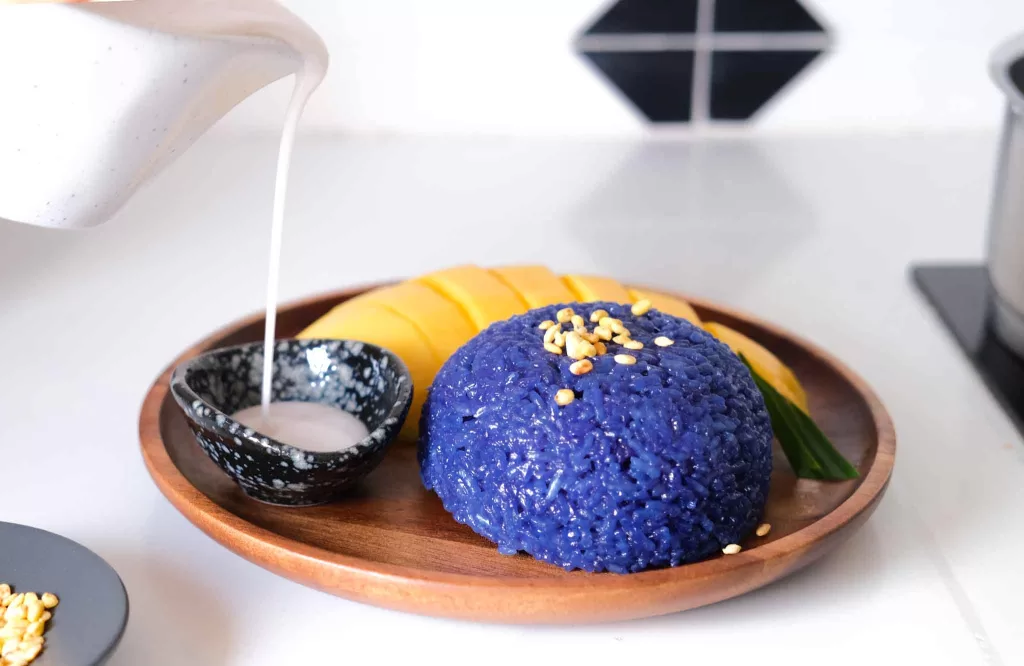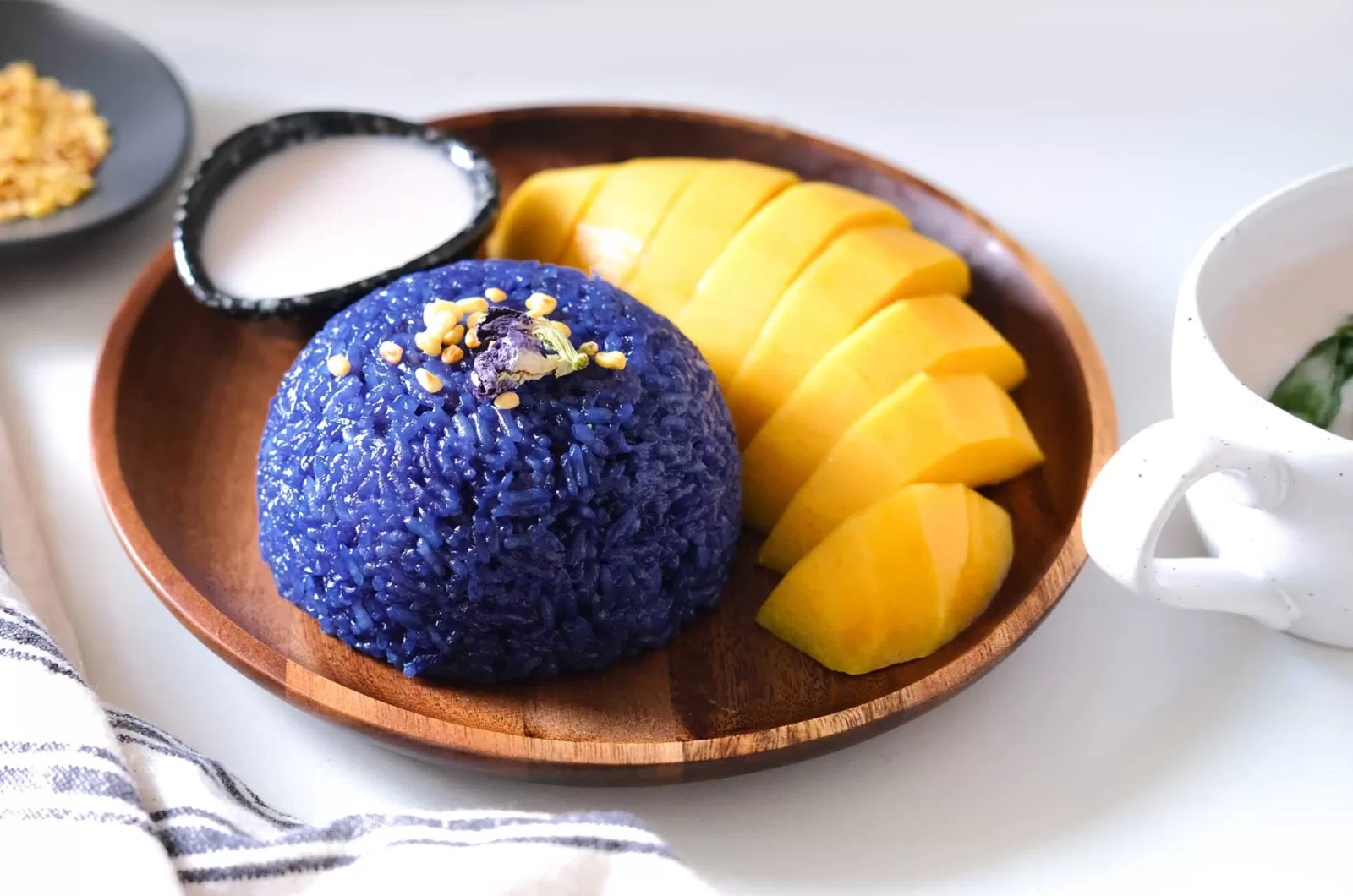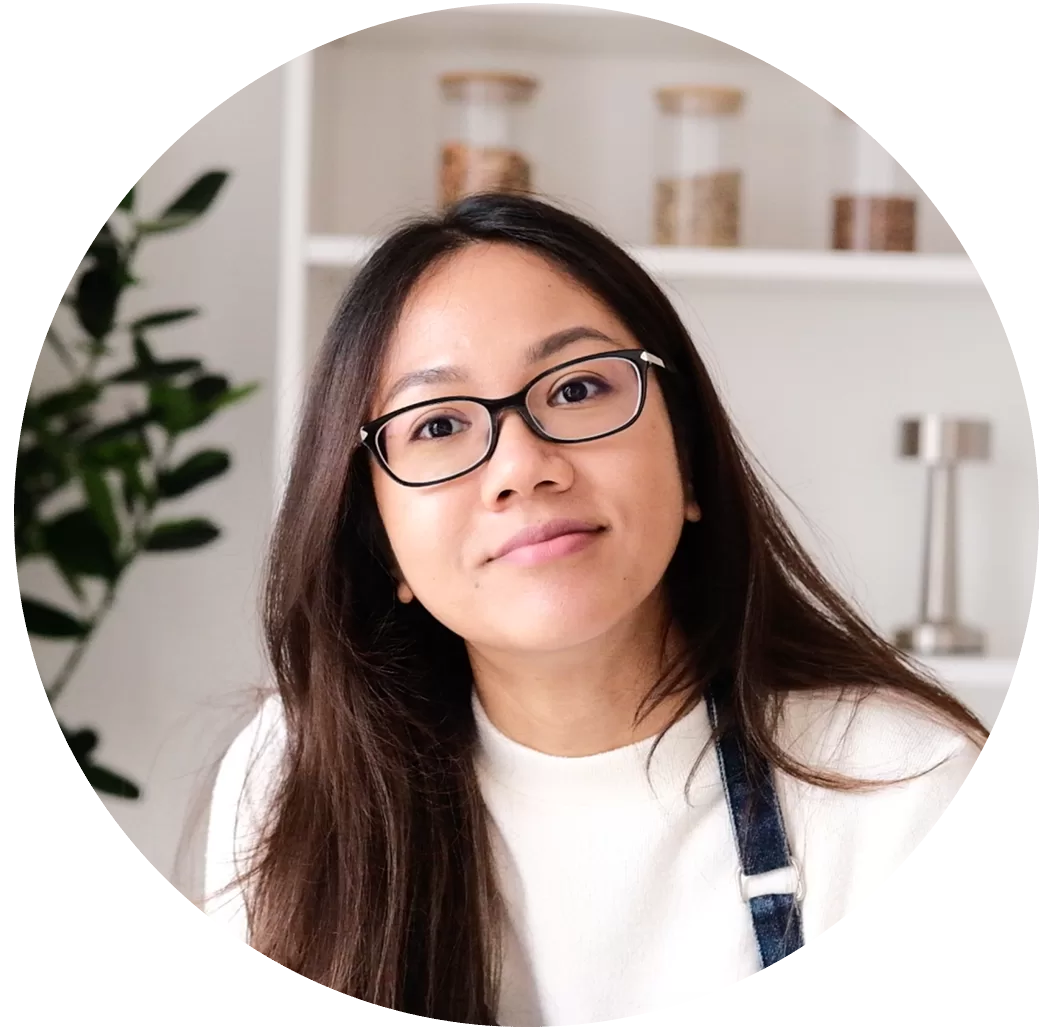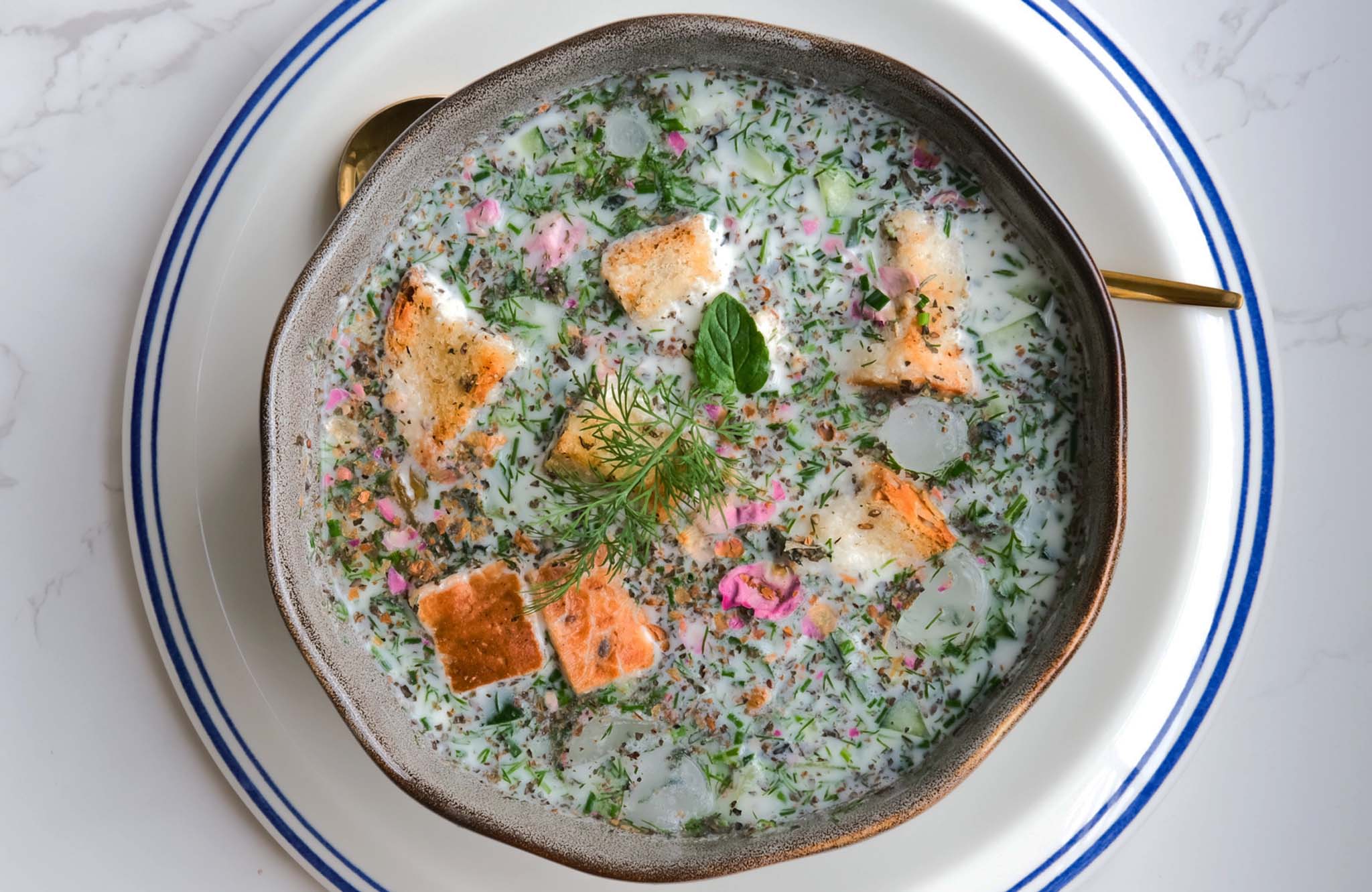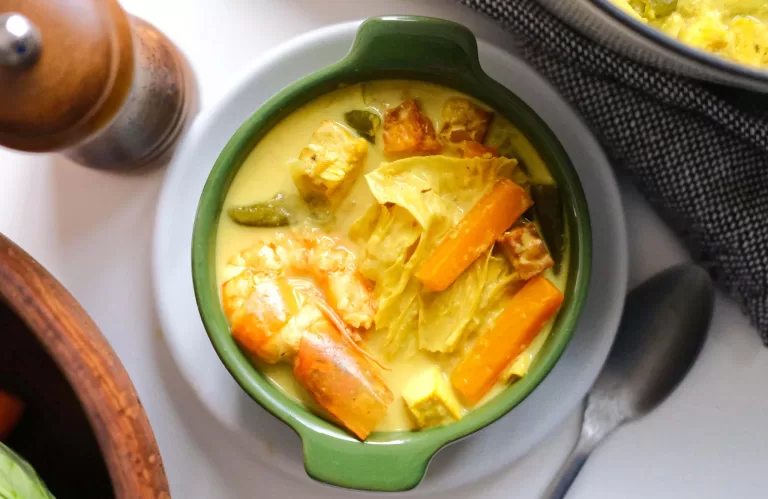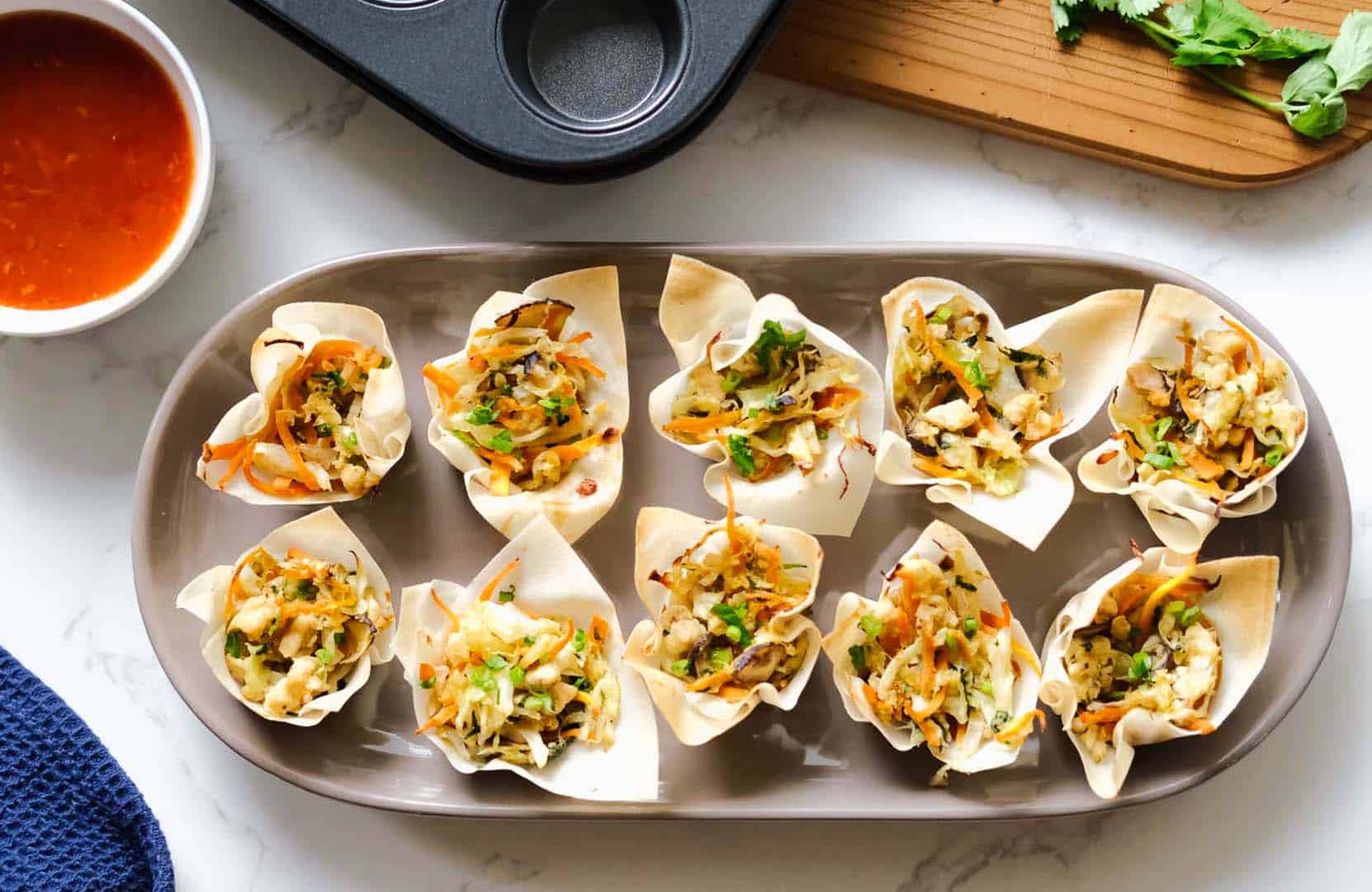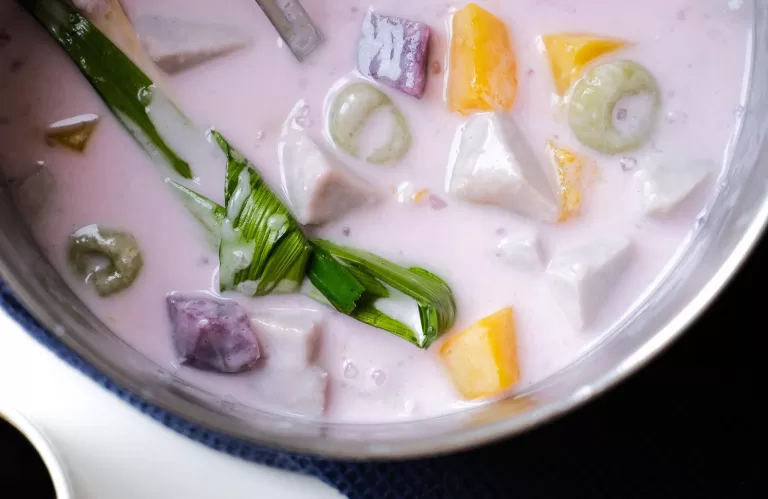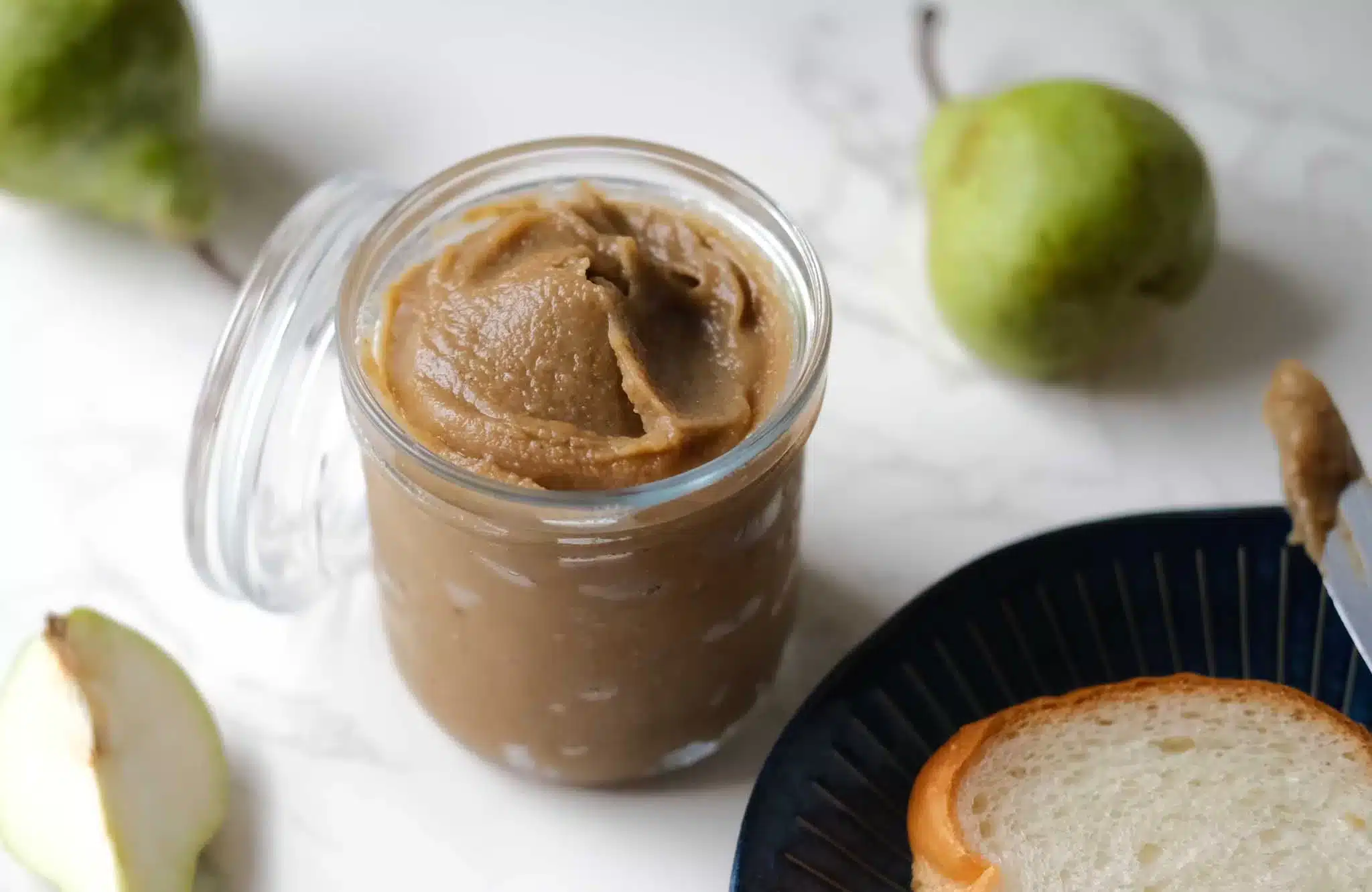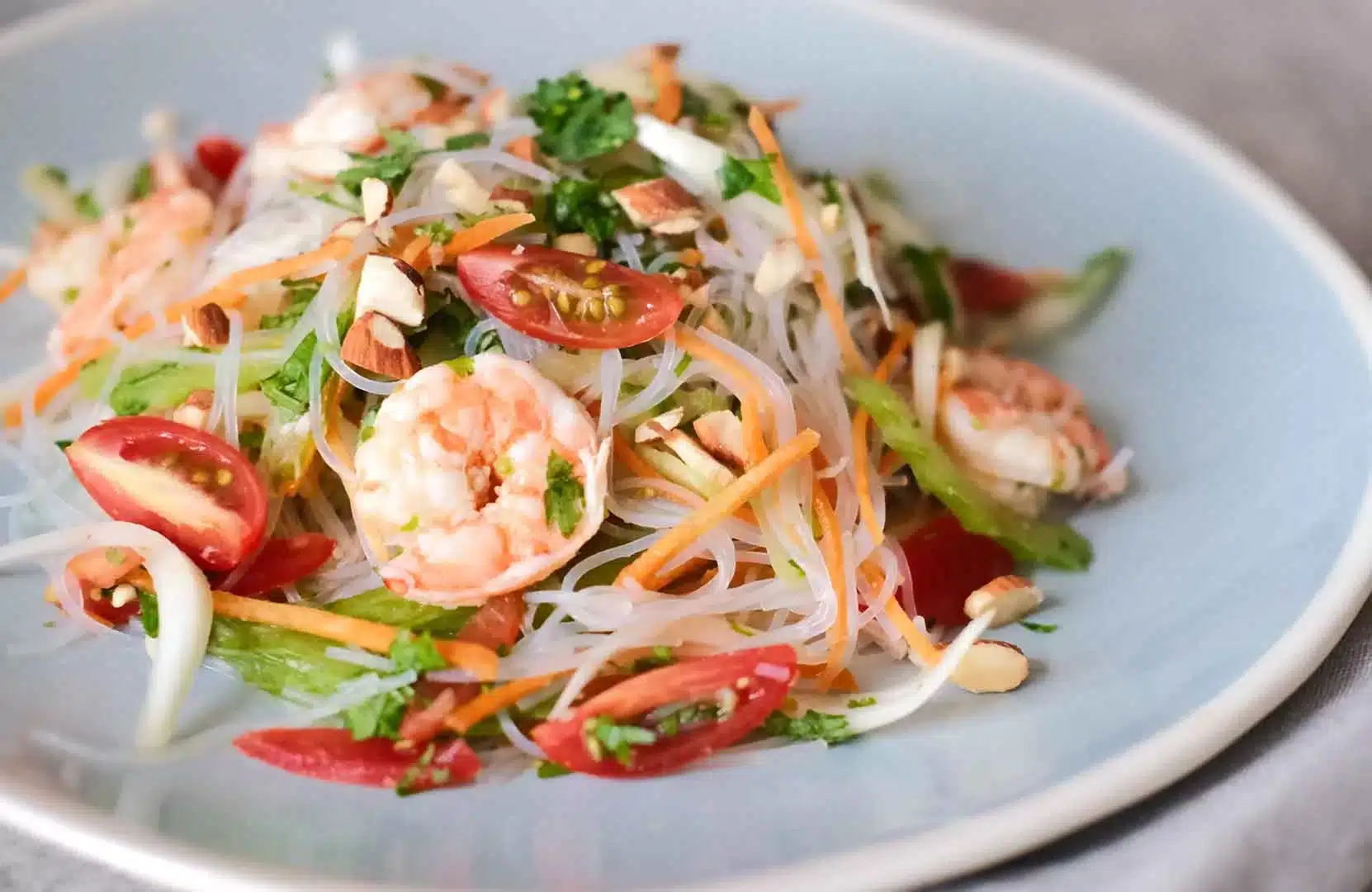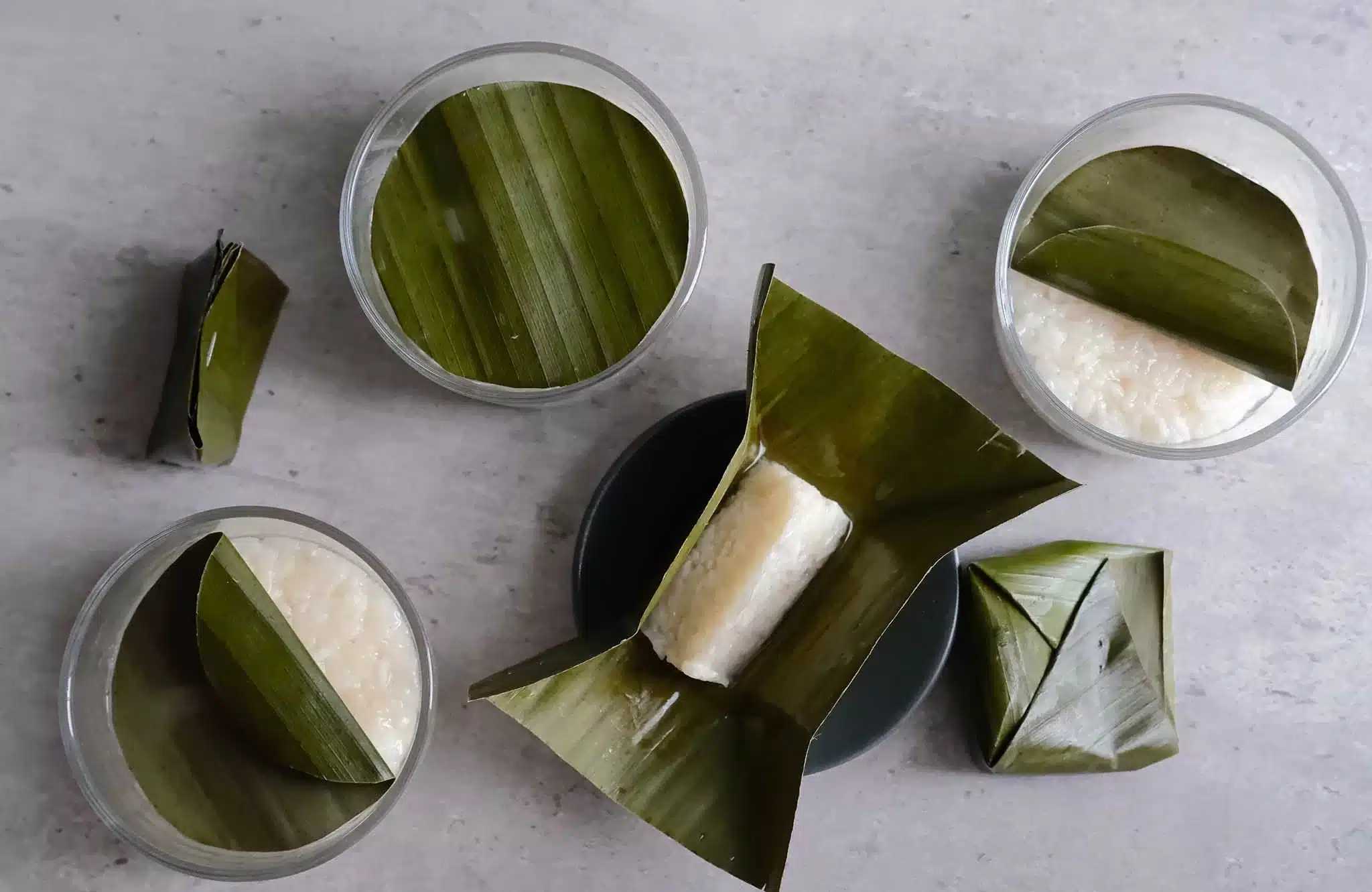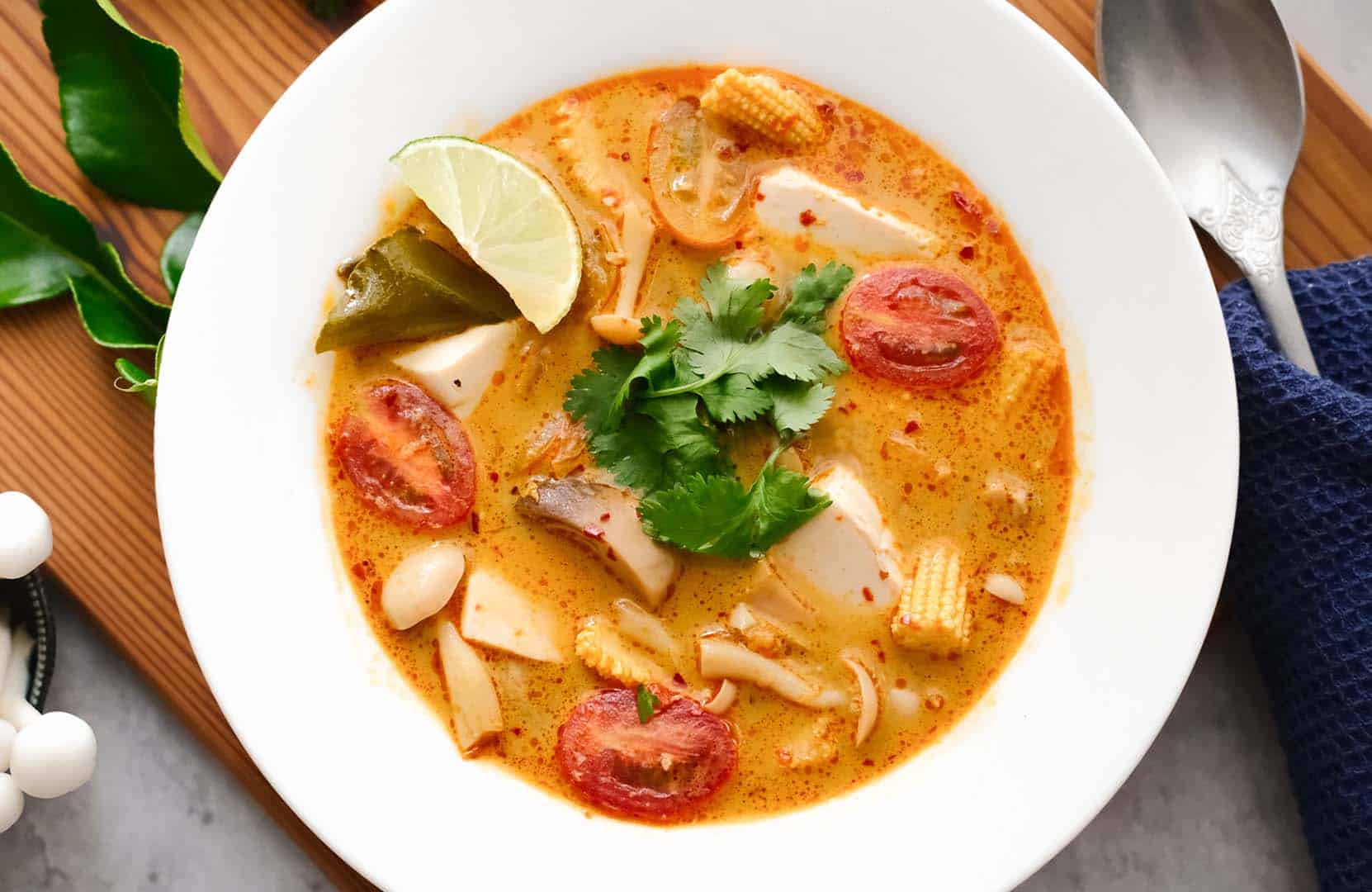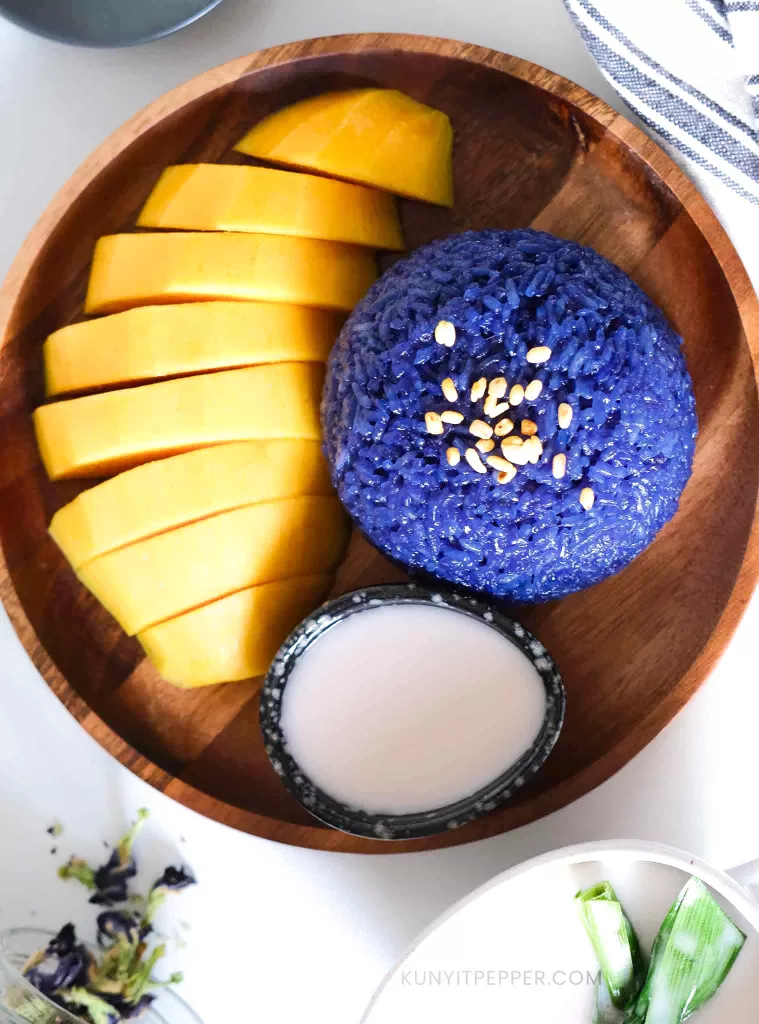
This Butterfly Pea Mango Sticky Rice is a gluten-free dessert with an added natural coloring that comes with antioxidant properties. So it’s not just blue and pretty for no reason but may support our overall health!
A classic childhood Thai dessert
This Thai Mango Sticky Rice is one of my favorite childhood Thai desserts to make, especially during mango season.
Growing up in North Malaysia at my grandparents’, where the border of Thailand is just 1 hour away, there’s a huge supply of different types of aromatic and sweet Thai mangoes, especially from mid-year onwards.
My grandmother never missed making Mango sticky rice whenever there was an abundance of sweet mangoes her husband bought from the morning market.
Thinking about this makes me realize my fondness for sticky rice desserts may come from my grandparents. Maybe my sweet tooth, too.
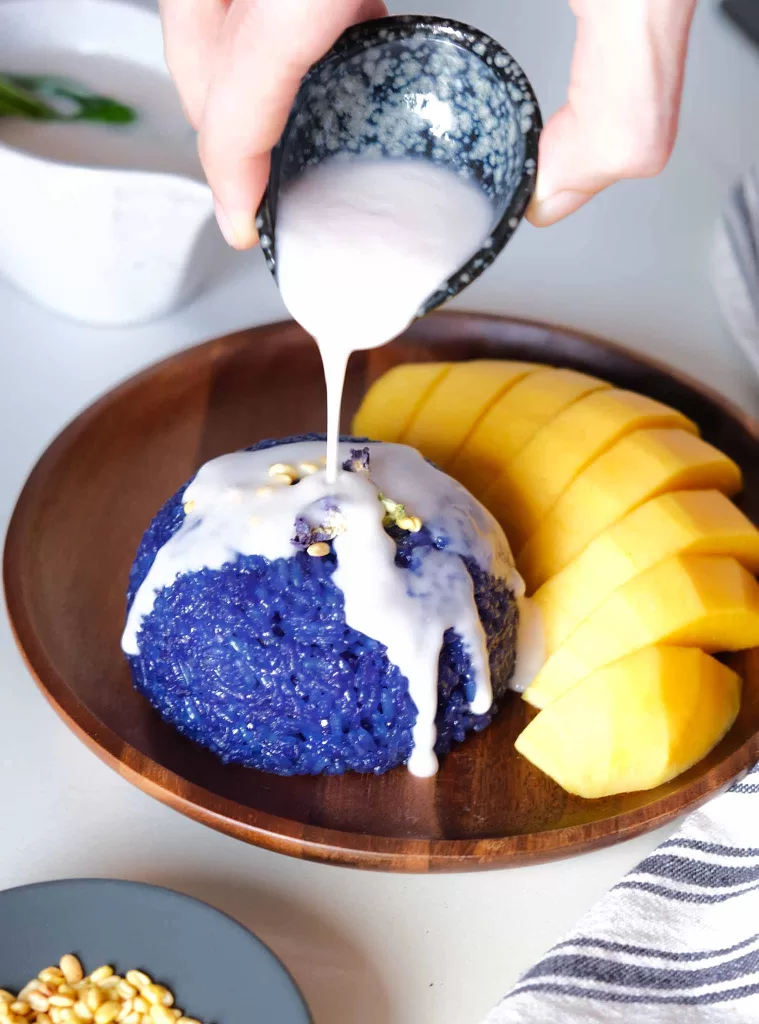
Table of Contents
- A classic childhood Thai dessert
- About this Butterfly Pea Mango Sticky Rice
- What is Butterfly Pea Flower?
- Ingredients to make Butterfly Pea Mango Sticky Rice
- How to make Butterfly Pea Mango Sticky Rice
- How to make Toasted Mung Bean Garnish – Mango sticky rice crunchy garnishing
- Reheating Guide
- Recipes with mango you might like
- Recipes with glutinous rice you might want to try
- FAQs
About this Butterfly Pea Mango Sticky Rice
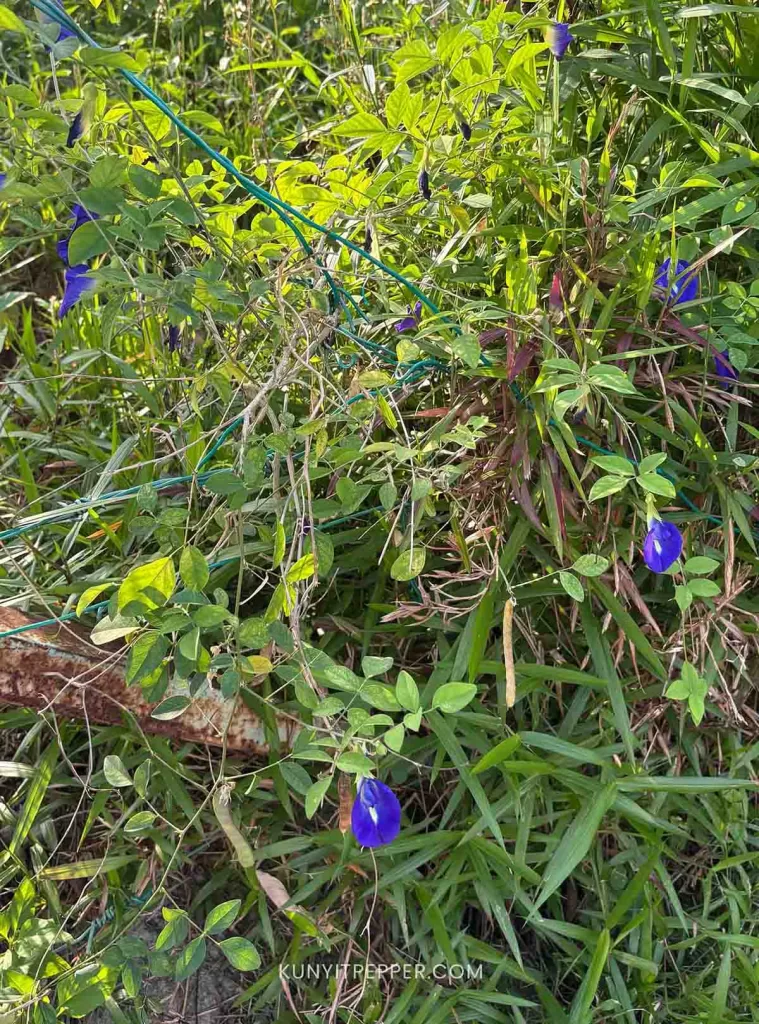
The blue color on the sticky rice comes from boiling the blue pea flower in water, which is then absorbed by the rice during cooking. So, the total time you need to make this blue pea mango sticky rice is about 40 minutes.
I cook the blue sticky rice in a rice cooker over a normal rice setting without soaking. It’s not traditional, but it is definitely the fastest and easiest way to cook glutinous rice if you want to skip the soaking.
My family and I have been doing this many times when we need quick dishes with glutinous rice. So, for beginners, I highly recommend this method if you own a rice cooker.
Being a health-conscious person, I love adding healthy elements to my recipes. This butterfly pea flower is known for its antioxidant properties, and infusing it in rice may add some nutritional value to the rice.
✏️ Butterfly Pea Flower is rich in Anthocyanin – a powerful antioxidant that is also in berries and can benefit health in many ways. One of the potential health benefits of consuming food rich in antioxidants is that it can reduce the risk of chronic diseases.
What is Butterfly Pea Flower?
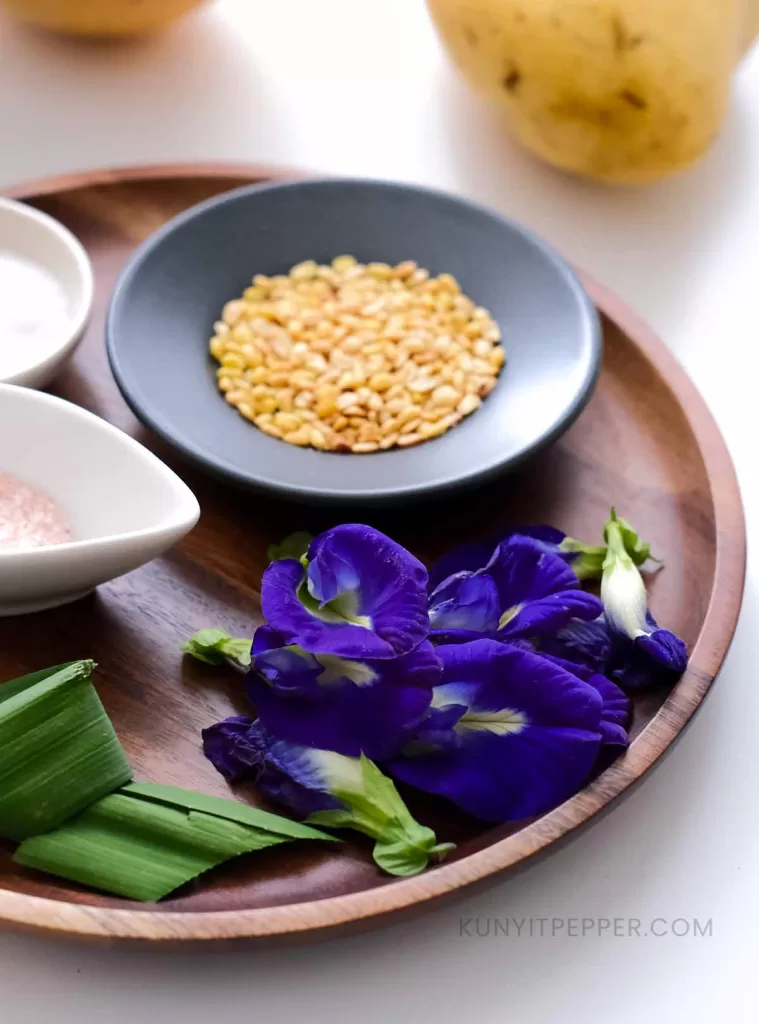
Scientifically known as Clitoria ternatea, this flower produces a natural blue dye, and it’s commonly used to color rice and desserts and infused in drinks.
This flower is native to Southeast Asian countries. In Malaysia, Singapore, Indonesia and Brunei, Butterfly Pea is called Bunga Telang.
Since it’s pretty easy to grow, It’s common for households to grow this blue flower in their yard. Making a handy source of natural blue coloring for food. And for most health-conscious people, infusing it in tea is a common practice.
This flower is also used in traditional Ayurvedic medicine, known for its anti-inflammatory properties.
Ingredients to make Butterfly Pea Mango Sticky Rice
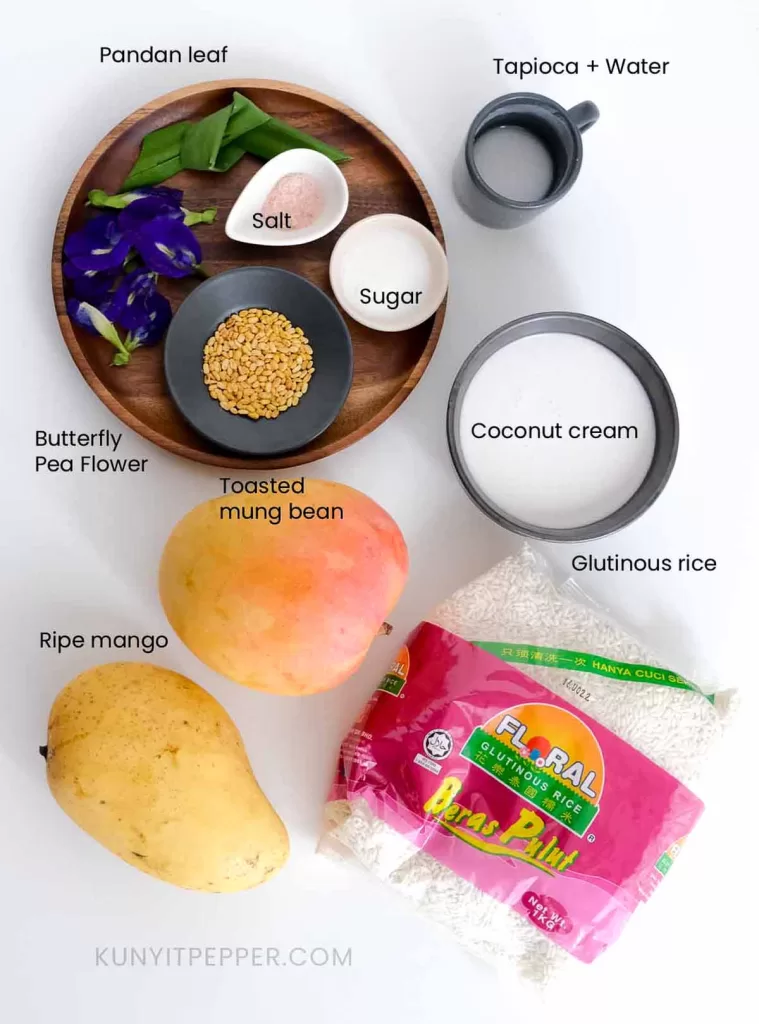
1. Glutinous Sticky rice
- Glutinous rice is typically whiter and more cloudy than normal white rice. You can find it in Thai marts or Asian markets. When buying, make sure it’s written “Glutinous Rice” on the packaging. Do not mistake glutinous rice for Japanese rice. Although they both can be sticky, they differ in flavor, texture, and level of stickiness.
2. Butterfly Pea Flower
- You can use both fresh and dehydrated versions, whichever is accessible to you.
3. Ripe Mango
- Sweet, ripe, and soft mango is the key to making the best mango sticky rice. Find the soft yellow or orange-ish skin when you press it with a finger. I usually pick the one with some black spots on the skin, but be mindful not to choose the bruised and overripe mango. If you are not sure, always check with the seller.
4. Coconut Cream
- I use fresh coconut cream. Feel free to use canned coconut cream. If you use coconut milk extracted from scratch, consider triple the amount of starch.
5. Pandan Leaf (Optional)
- For an authentic Thai dessert flavor, add pandan leaf when making coconut cream. This aromatic Ayurvedic leaf makes Mango sticky rice more aromatic. However, if you can’t find it, skip it entirely.
6. Sugar
- Since I use a sweet mango, this recipe uses minimal sugar without overpowering sweetness. You can reduce or omit the amount of sugar, it’s up to your dietary needs.
7. Salt
- Growing up, my family always stressed the need for salt when cooking coconut milk. It really elevates the taste of coconut milk, so don’t skip this. But if you are not adding sugar, consider reducing the salt to half.
8. Tapioca starch
- This is used to thicken the coconut milk. Dissolve the tapioca starch with water first before adding it to coconut cream when cooking.
- Substitute for tapioca starch
Corn starch-use half the amount of cornstarch compared to tapioca flour. 1 tbsp tapioca starch = 1/2 tbsp cornstarch.
9. Crispy toasted Mung Bean (Optional)
- This gives a more authentic restaurant style of mango sticky rice. And I really love the added texture and mild salty flavor that balance the sweetness. Scroll down on how to make the garnishing.
- Substitute for garnishing – sesame seeds!
How to make Butterfly Pea Mango Sticky Rice
- Extracting blue dye.
Boiling is the quickest way to get the color from the flower. Combine the flower and water in a pot and bring to a boil over high heat.
Once boiling, remove the pot from the stove and let it steep for about 10 minutes before straining the flower.
Adjust the color accordingly. If you’d like the sticky rice to be lighter blue, consider reducing the amount of flowers. - Cooking the sticky rice.
Start with washing the sticky rice until the water runs clear. Combine blue pea water with glutinous rice in a rice cooker bowl, even out the rice with a spatula, and then set them to cook over a regular rice setting.
This will take about 30 minutes (depending on the rice cooker). While waiting, start cooking the coconut cream. - Preparing coconut cream.
In a saucepan, combine coconut cream, tapioca flour water, sugar, pandan and salt and bring to a simmer over medium to low heat.
Continuously stir the coconut cream with a spatula until the sugar dissolves and the liquid comes to a boil. This will take about 3-5 minutes.
Once boiling, immediately turn off the heat and remove the pot from the stove. Transfer it to a bowl and leave it to cool. - Mixing parts of coconut cream with rice.
When the rice is partially cooked (10 minutes before it is fully cooked), add 1/4 cup of the cooked coconut cream into the rice cooker pot.
Gently fluff the rice to combine with the coconut cream and leave it to continue cooking. Meanwhile, go ahead and prep the mango. - Serving and garnish.
Slice the mango, and arrange it in a serving dish. Scoop the rice and top it with this crunchy and salty yellow mung bean for an added texture. Drizzle the coconut cream and enjoy!
The crunchy garnish on blue pea mango sticky rice adds an authentic Thai restaurant dessert experience. If you want to impress your family or guests, don’t skip it.
I like to make it extra and keep it as a crunchy snack so I can enjoy it like popcorn. Yellow split mung bean contains protein and antioxidants, and it’s easy to make using only the mung beans and salt!
Some recipes deep fry the mung bean, but you can also toast it in a dry pan without oil and still get to enjoy a similar crunch. Here’s how to make it.
How to make Toasted Mung Bean Garnish – Mango sticky rice crunchy garnishing
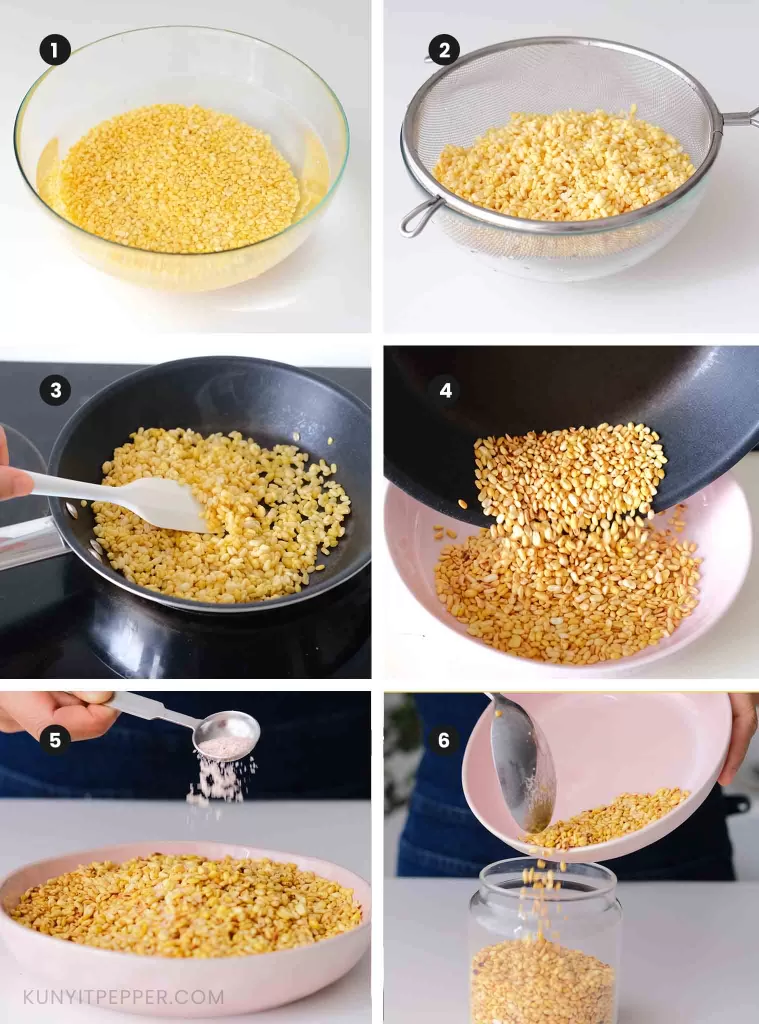
- Wash the mung beans until the water runs clear, then soak them in a bowl of water for 4 hours (or overnight).
- Once the mung beans double in size, drain them using a fine mesh strainer.
- Scoop a portion of the moist mung beans into a non-stick pan and toast over medium-low heat
- Stir continuously with a spatula to ensure they cook evenly. Do it until they turn golden brown.
- Season with salt and mix well
- Transfer them into a jar, and it’s good to go!
Recipe:
- 1 cup yellow split mung bean
- 1 tsp of salt
Reheating Guide
When stored in the fridge, sticky rice tends to dry out and harden. There are two easy and quick ways you can revive them back to their soft, warm, and moist texture: with a microwave and steamer.
How to reheat sticky rice in a Microwave – (without drying the rice)
Heat a small bowl of water in a microwave for 1 minute. Transfer the heated bowl of water next to the sticky rice on a dish and reheat it in a microwave for 2 minutes or until soft. The heated water will create steam in a microwave that prevents the rice from drying while heating.
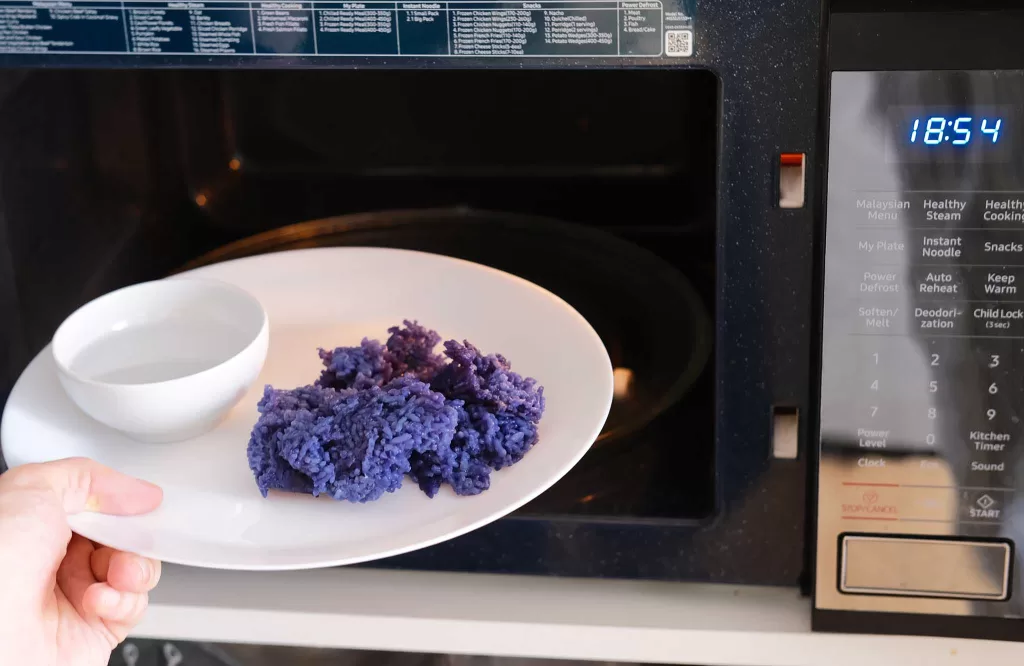
How to reheat the sticky rice in a steamer:
In a steamer pot, bring water to a simmer. Place the sticky rice in a steamer basket and leave it to steam for 5-10 minutes or until soft.
Recipes with mango you might like
Recipes with glutinous rice you might want to try
- Sweet fermented White Glutinous Rice | Tapai – Naturally sweet Southeast Asian fermented rice dessert.
- Sweet Fermented Purple Rice | Black Rice Tapaai – Black Rice version of fermented rice dessert rich in antioxidants.
FAQs
Does glutinous rice contain gluten?
No, glutinous rice does not contain gluten and is completely gluten-free. Glutinous rice refers to its sticky texture, not the gluten. Gluten is a protein found in cereals like wheat, barley, and rye, which acts as a binding agent. So glutinous and gluten are two different words.
What are the differences between Japanese rice and Thai sticky rice?
Japanese rice is a short-grain rice commonly used in Japanese dishes like sushi. It contains less starch than Thai sticky rice, making it less sticky.
Thai sticky rice, on the other hand is a medium grain rice that is denser, chewier, and starchier, which gives its sticky and starchy texture. While both rice have similar calorie content, Thai sticky rice may have slightly more.
Unlike Japanese rice, which is consumed daily, Thai sticky rice is typically used in desserts and celebratory dishes across Asia.
What are the calories in mango sticky rice?
Mango sticky rice calories vary from recipe. My Butterfly Pea Mango Sticky Rice is about 400 calories per serving.
What rice can be used to substitute glutinous rice when making mango sticky rice.
There is no ideal substitute for glutinous rice in mango sticky rice. However, glutinous rice comes in different varieties and colors. For a healthier option, you can replace white glutinous rice with black rice. Black rice is a glutinous rice family, and it is rich in anti-inflammatory and antioxidant properties.
Butterfly Pea Mango Sticky Rice – Rice cooker, no soaking
3
servings30
minutes1197
kcal40
minutesButterfly Pea Mango Sticky Rice with natural blue coloring that comes with antioxidant properties. The recipe is easy to make with a rice cooker without prior soaking.
Ingredients
1 Sweet and ripe mango
- Butterfly Pea Sticky Rice
1 cup Glutinous Rice
7 g Dried butterfly pea flowers
1 1/4 cup Water
- Coconut Cream
1 cup Coconut Cream with no added sugar (250g)
1/2 tsp Salt
2 tsp Sugar (adjust accordingly)
1 piece Pandan leaf – tie in a knot (optional)
1/2 tbsp Tapioca starch dissolved in 1 tbsp of water (for a substitute, see above)
- Garnish (Optional)
1 cup Toasted Mung Bean (scroll above on how to make it)
1/2 tsp salt
Directions
- Extracting the blue dye from flower. Boiling is the quickest way to get the color from this flower. Combine the flowers and water in a pot and bring to a boil over high heat. Once boiling, let it steep for about 10 minutes away from the stove and strain the flower.
- Cook butterfly pea sticky rice in a rice cooker. Wash the sticky rice until the water runs clear. It usually took me 4-5 times. Combine the blue pea water and rice in a rice cooker bowl, even out the rice with a spatula, and then set them to cook over regular rice setting. This will take about 30 minutes (depending on the rice cooker). While waiting, start cooking the coconut cream.
- Preparing the coconut cream. In a saucepan, combine coconut cream, tapioca flour water, sugar, pandan leaf and salt and bring to a simmer over medium to low heat. Continuously stir the coconut cream with a spatula until the sugar dissolves and the liquid comes to a boil. This will take about 3-5 minutes. Turn off the heat once boiling and remove the pot from the stove. Transfer it to a bowl and leave it to cool.
- Mix parts of the coconut cream with partially cooked glutinous rice. When the rice is partially cooked (10 minutes before it is fully cooked), add 1/4 cup of the cooked coconut cream into the rice cooker pot and gently fluff the rice to mix the coconut cream. Close the lid and leave it to continue cooking. You can go ahead and prep the mango while the rice is cooking.
- Assemble and garnish. Slice the mango and arrange it in a serving dish. Scoop the rice and top it with this crunchy and salty yellow mung bean for an added texture. Drizzle the coconut cream and enjoy!
Notes
- Store the leftover sticky rice and coconut cream in a container with a lid in the fridge. To reheat sticky rice, see the above guide.
- Adjust how blue you want your sticky rice to be by reducing the amount of flower when boiling.
- Choose ripe and sweet mango.
🥣 Did you try this recipe? Let me know your thoughts in the comment below.

